It’s 2021, you’re looking for a new job, and you suddenly realise your LinkedIn profile lacks career-driven-lustre. Don’t worry, you’re not alone. In fact, many professionals – especially executives and CEOs – don’t prioritise updating their LinkedIn profile until they’re looking for a new role. Worry not, our experts are here to tell you in 16 simple steps, how to stand out to fashion recruiters on LinkedIn.
Three people are hired every minute through LinkedIn. That means when you’re looking for your next career move it’s smart to up your LinkedIn game.
Defining your goals is an essential first move to make before you get stuck into the platform. You don’t want to lose precious time endlessly scrolling with no real results to show for it. The only way LinkedIn will work for you is if you know why you’re using it in the first place. Do you want to raise your profile to become an industry leader? Do you want to generate leads from customers? Or do you want to find yourself a new job? Your goals will change over time and when they do, you must change your LinkedIn profile to reflect this. Think of it as the same as updating your CV when you’re selling yourself for new opportunities.
Right, now you’ve decided what your goal is, let’s get onto making your profile work hard and get you the results you want…
A complete LinkedIn profile will always look better – and stand out more – than a partly-finished one. You don’t want to give fashion recruiters, headhunters and employers the impression you only finish half a job. Which is why a well-thought out profile to reflect your professional self in the best light, is a must.
It’s also important to add that LinkedIn is not like a CV or resume. The content of your CV should be very professional, whereas your LinkedIn presence should be more conversational. It’s an opportunity to show your personality and express your passions.
An excellent LinkedIn profile must include:
LinkedIn states that profiles with headshots are 14 times more likely to be viewed than those without. And, including a photo on your LinkedIn profile increases your chances at getting viewed by 40%. So, looking for that perfect photo is a must if you want to get contacted by recruiters. But, remember, LinkedIn is not Facebook. You need to keep it professional!
You may have noticed that some LinkedIn users have started investing in professional business shots to use on their profiles, and we don’t blame them. Finding a decent picture that looks professional, clear is not easy. Before you go looking for a professional photographer near you, here are our tips to help you find the right profile picture to attract the right fashion recruiter:

In short, yes. Taking advantage of the background image function on your LinkedIn profile will help you shape the professional brand you’re portraying. It’s also a box many professionals don’t bother with. So, if you do upload an image, your profile is already looking better than your competition.
What should your background profile image be? Uploading an example of your work will always catch the eye of a recruiter. Or if you’re really stuck, play it safe with an image that’s related to your industry and the role you do. For example, a fashion designer could have an image of a runway.
A LinkedIn headline is the section at the very top of your profile, sat just under your name. For years users would put their job title in here and that was suffice. However, as the platform has grown and professionals use the platform to drive leads, secure jobs and hire quality candidates, headlines have stepped up a notch.
We said it before and we’ll say it again – start by referring back to who you’re trying to attract and write your headline for them. Recruiters and employers search for candidates by putting keywords into the search bar. These keywords are matched up to a user’s profile headline, therefore it’s important you consider what you’re ideal user will be looking for.
It’s recommended to change your headline and update it every now and then, too. Make it attractive, and if you have a sense of humour, you can also make it funny. Your headline is what will make someone click, or walk away. One thing you mustn’t do is boast. An over-confident headline can be off putting for anyone. If you get really stuck you can use HubSpot’s headline formula: Job title, helping X do Y. But, we always think originality wins over formulas.
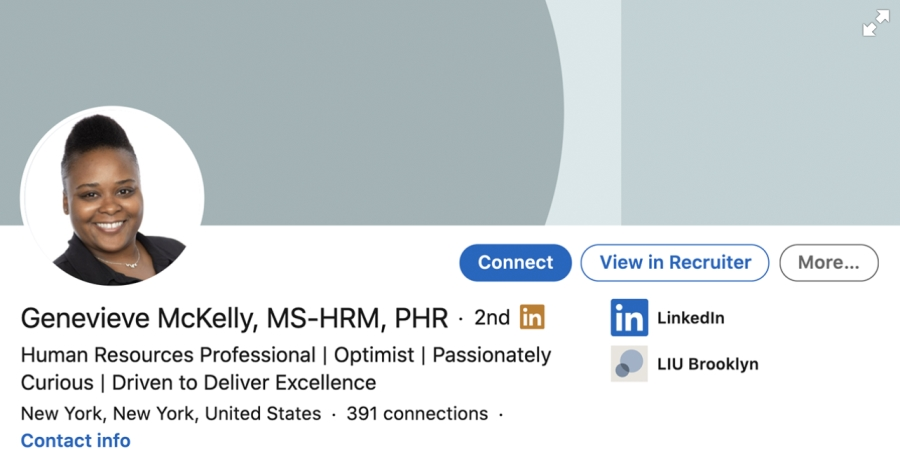
Remember the days when you had to write a personal statement to apply for a university spot? Think of your LinkedIn ‘about’ section (sometimes called ‘summary’) in the same way. LinkedIn now gives you an opportunity to sell yourself, so make use of this to gain a competitive advantage.
LinkedIn itself has best practises for writing a compelling summary, but here are the things that make our team of fashion recruiters and headhunters sit up and take notice:
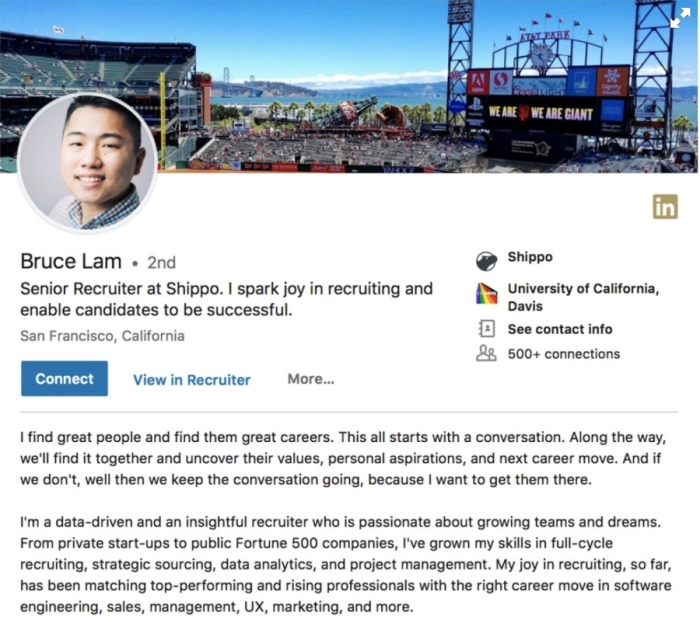
The featured section sits between the ‘about’ and ‘activity’ boxes on your LinkedIn profile. It allows you to highlight the work you want your audience to see by adding images, documents and links to external websites.
Think about using the featured section to shape your personal brand. Whether that’s for you as an individual or your business (if you’re a business owner). Make sure you update this section at least once a month too. It needs to be current and showcase your very best assets. A featured section with articles from 2 years ago won’t be of any use to a recruiter. We want to know what you’re doing now.
The kinds of things you should consider uploading to this section are:
Articles…
Images…
Websites…
Videos…
Whilst a fashion recruiter or headhunter will want to be initially impressed by your headline and about sections, your ‘personal experience’ could be a make or break moment in their decision to reach out to you for potential job opportunities.
Detail is key in the experience box. Headhunters want to know your achievements, your skills and your responsibilities, to see whether your profile matches up to the job they have to fill. But, remember to keep your information precise. This is not your CV, so it needs to be punchier and less wordy.
Start each ‘experience’ post with an overview. Add a brief description of your role and what you have achieved. Follow this with more detail about your responsibilities, the difference you’ve made, and why you’re highly skilled at what you do. Think about the keywords a recruiter or headhunter will search for too. It’s important you add these keywords into your text, as it will allow your profile to be found. For example, if you’re a buyer specialising in outdoor trekking items, add the words ‘buyer’ and ‘outdoor trekking’ into your copy.
Finally, make sure you list your employment positions throughout your entire career. Sometimes the roles leading to where you are today, are just as important as the now.
Your education and certificates are hugely informative for a recruiter. Okay, so it might be a long time since you took an exam, but knowing that (at some point) you showed dedication to learning and studying, tells someone a lot about the person you are.
Places of study can also be a great conversation starter. If a headhunter or recruiter studied at the same university as you, or even better the same course, this can sometimes be the push they need to get in touch and say “hi”.
If you’re not a native English speaker (and are looking to be recruited via a UK-based recruiter) we advise looking for the right education terminology for your qualifications, rather than guessing. There’s a big difference between a Bachelor’s Degree and a Master’s Degree, so it’s worthwhile understanding the levels to make sure your skills match them.
People who list at least five skills receive up to 17 times more profile reviews. There’s also evidence that the more endorsed skills you have, the higher you’ll rank in the search results. Spending time on your skills section however is not just about views. LinkedIn’s algorithm shows someone viewing your page connections they have with people that have endorsed you too. This means it can be a great way to connect you to a headhunter or recruiter, without too much effort.
To update your skills section, simply click on the ‘add new skill’ button. You can add up to 50 skills, but we always recommend to start with at least 10 (you can always add more as you go). Now here’s the slightly tricky part – getting people to endorse you for your skills. Start by endorsing some of your present and past colleagues, and then asking them to endorse you in return. You could make it even simpler for them by asking them to endorse you for a specific skill that’s related to the work you carried out together. It might seem a lot of effort, but studies have shown you’re likely to rank higher for a skill a recruiter is seeking if you have a greater number of endorsements for that skill.
Speaking another language – or multiple languages – is a skill. Therefore, it’s important you also add this to your skills and endorsement section. Recruiters will often search for ‘fluent French speaking buyers’ or ‘Italian speaking fashion designers’, so adding your bilingual skill to your profile will help you to be found for these roles. Only put languages as a skill if you’re fluent or at an intermediate level. Any lower than this normally isn’t taken into account with recruiters.
Think of recommendations on your LinkedIn page like a review for a product. When you shop and see a product that has a five-start review with great customer feedback, you’re more likely to click ‘buy’, right? This is exactly how it is for headhunters scrolling through LinkedIn. In fact, many fashion recruiters will start at the top and whizz right down to the bottom to see what colleagues have to say about you.
The best way to up-your-recommendations-game is to write them for other people – and ask them to help you out in return. The more senior the colleague or client is, obviously the better. But, a good rounded recommendations section with feedback from junior through to senior positions, is the best result to aim for. If you don’t get a full house of recommendations in return, that’s okay, as it still looks good to show you’re interested in offering recognition to other people.
As with most social media platforms, it’s all about the numbers game. The more ‘followers’ (connections) you have, the more likely the platform’s social media algorithm will work in your favour. That said, with LinkedIn, quality over quantity wins every time. Revisit your goals and think about the kind of connections that could help you achieve them:
Find the right LinkedIn group and your presence can boost ten-fold. But, succumb to joining too many groups or the wrong groups and your time spent on LinkedIn will be counterproductive.
So, how do you find the right groups? Think about your goal and search for a group that aligns you with that goal. For example, if you want to be headhunted for a CEO role, you should be looking for groups that connect you with other CEOs in the fashion industry and recruiters that specialise in filling CEO positions. When you know the type of group you’re looking for, put this search term into the search box at the top of LinkedIn and click on the ‘groups’ button. LinkedIn will then highlight the top groups related to your search, and also show you groups other connections of yours are following.
Joining the right groups and being active in them are a sure-way to getting your name out there and raising your profile. It’s important to note that groups are also a great way to find new connections. Look at the comments on the posts to see if there are any professionals that can help you achieve your LinkedIn goals. If there are, ask to connect with these people, and you’re on your way to growing your network with the right people.
Finally, the only way LinkedIn is going to really work for you, is if you’re active on it. By being ‘active’ we mean making LinkedIn part of your working week. Dipping in and out will not reap any benefits. It’s a marketing tool that needs to be nurtured.
Many social media gurus say you should post daily to LinkedIn. But, in reality that’s a lot of time taken away from your day job. We say, aim to upload a post and interact with other users on the platform at least every other day. This way, you’ll be present, without being too present. Interestingly, there has been research to suggest people posting more than once a day have seen a drop in their engagement rates.
Not only will your activity help your algorithm and make you show up in other users’ LinkedIn feeds more regularly, but your activity will be visible on your profile page too. That means, when people visit your profile they’ll be able to see that you’re an engaged professional, investing in the platform to further your career.
So, what should you post to LinkedIn? Here are our top tips:
Your reasons for using LinkedIn will change over time. Because of this, it’s important to continuously review why you’re using LinkedIn to make sure your efforts and time spent on the platform work for you. Every time you go to take action on LinkedIn, remind yourself of your goals. If you can do this, you’ll know that every step you take will be closer to achieving what you’ve set out to achieve.
Good luck!
Want more tips for finding your next role? Read these:
Or why not work with our fashion recruitment agency to find your next job beyond your expectations.

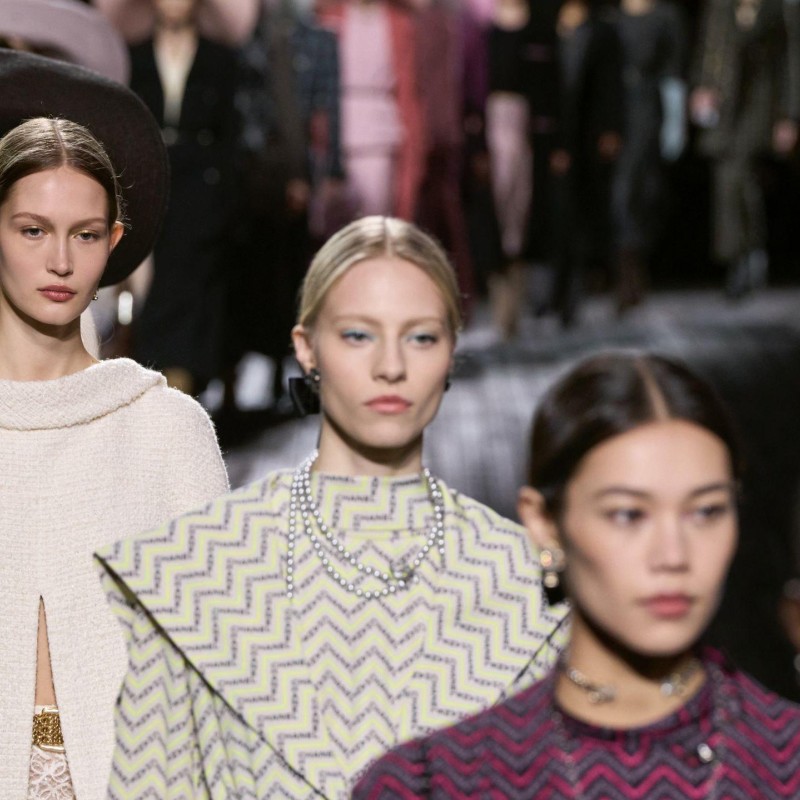
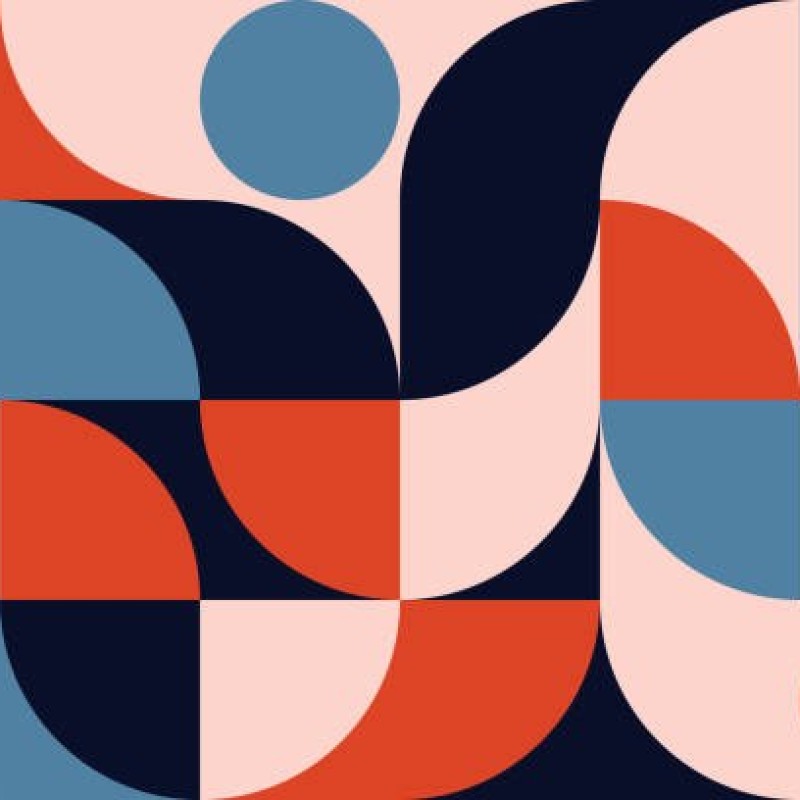

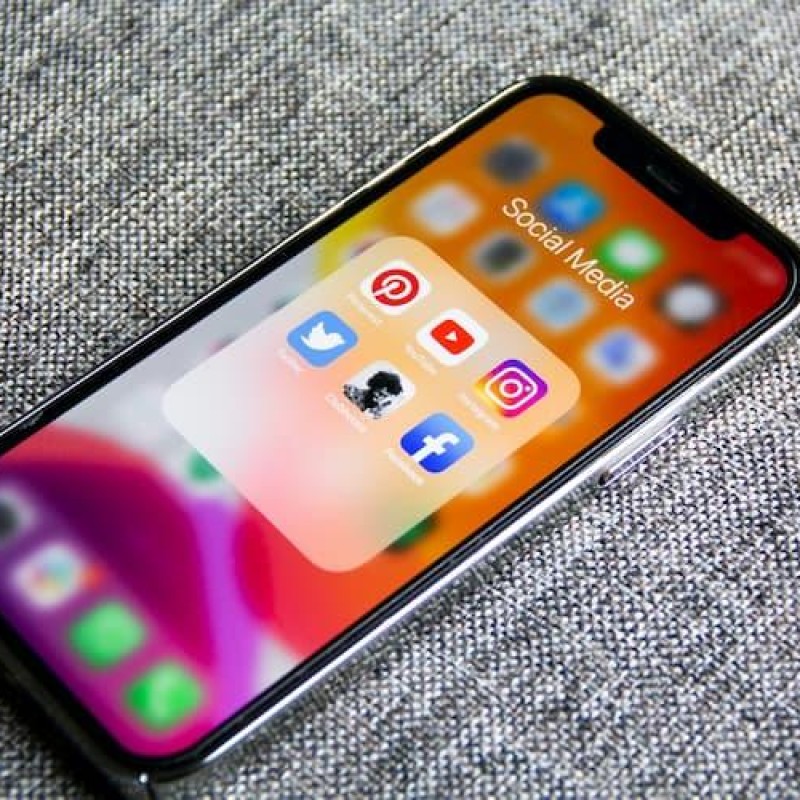
Beyond Talent
Fashion Recruitment Agency
Specialising in Senior and Executive recruitment for the luxury fashion, lifestyle and beauty industries worldwide.
Head Office Address
20-22 Wenlock Road, London, N1 7GU
Contact Us